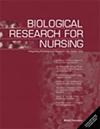豆浆联合抗阻训练对老年男性体能和骨骼肌调节指标的影响。
摘要
目的:我们的目的是确定12周豆浆消费结合阻力训练(RT)对老年男性身体成分、身体表现和骨骼肌调节标志物的影响。方法:在本随机临床试验研究中,60名健康老年男性(年龄= 65.63±3.16岁)随机分为四组:阻力训练组(RT;n = 15)、豆浆消费量(SMC;n = 15),阻力训练+豆浆(RSM;n = 15),对照组(CON;N = 15)组。该研究对豆浆和安慰剂进行双盲试验。RT组和RSM组进行阻力训练(3次/周),持续12周。SMC组和RSM组的参与者每天消耗240毫升豆浆。评估干预前后的身体组成[体质量(BM)、体脂率(BFP)、腰臀比(WHR)和脂肪量(FM)]、体能表现[上肢力量(UBS)、下肢力量(LBS)、最大摄氧量(VO2max)、上厌氧能力、下厌氧能力和握力]以及血清标志物[卵泡抑制素、肌肉生长抑制素、肌肉生长抑制素-卵泡抑制素比值(MFR)和生长与分化因子11 (GDF11)]。结果:3种干预措施均显著(p < 0.05)提高了血清卵泡抑素浓度(RT = 1.7%, SMC = 2.9%, RSM = 7.8%),降低了血清肌生成抑制素(RT = -1.3%, SMC = -5.4%, RSM = -0.5%)、GDF11浓度(RT = -1.4%, SMC = -1.4%, RSM = -9.0%)和MFR (RT = -2.6%, SMC = -3.2%, RSM = -12%)。此外,我们观察到所有3个干预组的BFP (RT = -3.6%, SMC = -1.4%, RSM = -6.0%)、WHR (RT = -2.2%, SMC = -2.1%, RSM = -4.3%)和FM (RT = -9.6%, SMC = -3.8%, RSM = -11.0%)均显著降低。此外,结果发现,只有RT和RSM组肌肉量(RT = 3.8%, RSM = 11.8%)、UBS (RT = 10.9%, RSM = 21.8%)、LBS (RT = 4.3%, RSM = 7.8%)、上厌氧能力(RT = 7.8%, RSM = 10.3%)和下厌氧能力(RT = 4.6%, RSM = 8.9%)显著增加。3个干预组的握力均显著增加(RT = 7.0%, SMC = 6.9%, RSM = 43.0%)。干预12周后,VO2max仅在RSM中显著增加(1.7%)。此外,与RT、SMC和CON组相比,RSM组所有变量的变化均有显著差异(p < 0.05)。结论:豆浆和RT对骨骼肌调节标志物、体成分和运动性能有协同作用。目前的研究结果支持豆浆与RT对老年男性的重要性。Purpose: We aimed to determine the effects of 12 weeks of soy milk consumption combined with resistance training (RT) on body composition, physical performance, and skeletal muscle regulatory markers in older men. Methods: In this randomized clinical trial study, 60 healthy elderly men (age = 65.63 ± 3.16 years) were randomly assigned to four groups: resistance training (RT; n = 15), soy milk consumption (SMC; n = 15), resistance training + soy milk (RSM; n = 15), and control (CON; n = 15) groups. The study was double-blind for the soy milk/placebo. Participants in RT and RSM groups performed resistance training (3 times/week) for 12 weeks. Participants in the SMC and RSM groups consumed 240 mL of soy milk daily. Body composition [body mass (BM), body fat percent (BFP), waist-hip ratio (WHR), and fat mass (FM)], physical performance [upper body strength (UBS), lower body strength (LBS), VO2max, upper anaerobic power, lower anaerobic power, and handgrip strength], and serum markers [follistatin, myostatin, myostatin-follistatin ratio (MFR), and growth and differentiation factor 11 (GDF11)] were evaluated before and after interventions. Results: All 3 interventions significantly (p < 0.05) increased serum follistatin concentrations (RT = 1.7%, SMC = 2.9%, RSM = 7.8%) and decreased serum myostatin (RT = -1.3% SMC = -5.4%, RSM = -0.5%) and GDF11 concentrations (RT = -1.4%, SMC = -1.4%, RSM = -9.0%), and MFR (RT = -2.6%, SMC = -3.2%, RSM = -12%). In addition, we observed significant reduction in all 3 intervention groups in BFP (RT = -3.6%, SMC = -1.4%, RSM = -6.0%), WHR (RT = -2.2%, SMC = -2.1%, RSM = -4.3%), and FM (RT = -9.6%, SMC = -3.8%, RSM = -11.0%). Moreover, results found significant increase only in RT and RSM groups for muscle mass (RT = 3.8% and RSM = 11.8%), UBS (RT = 10.9% and RSM = 21.8%), LBS (RT = 4.3% and RSM = 7.8%), upper anaerobic power (RT = 7.8% and RSM = 10.3%), and lower anaerobic power (RT = 4.6% and RSM = 8.9%). Handgrip strength were significantly increased in all 3 intervention groups (RT = 7.0%, SMC = 6.9%, RSM = 43.0%). VO2max significantly increased only in RSM (1.7%) after 12 weeks of intervention. Additionally, significant differences were observed between the changes for all variables in the RSM group compared to RT, SMC, and CON groups (p < 0.05). Conclusions: There were synergistic effects of soy milk and RT for skeletal muscle regulatory markers, body composition, and physical performance. Results of the present study support the importance of soy milk in conjunction with RT for older men.

 求助内容:
求助内容: 应助结果提醒方式:
应助结果提醒方式:


